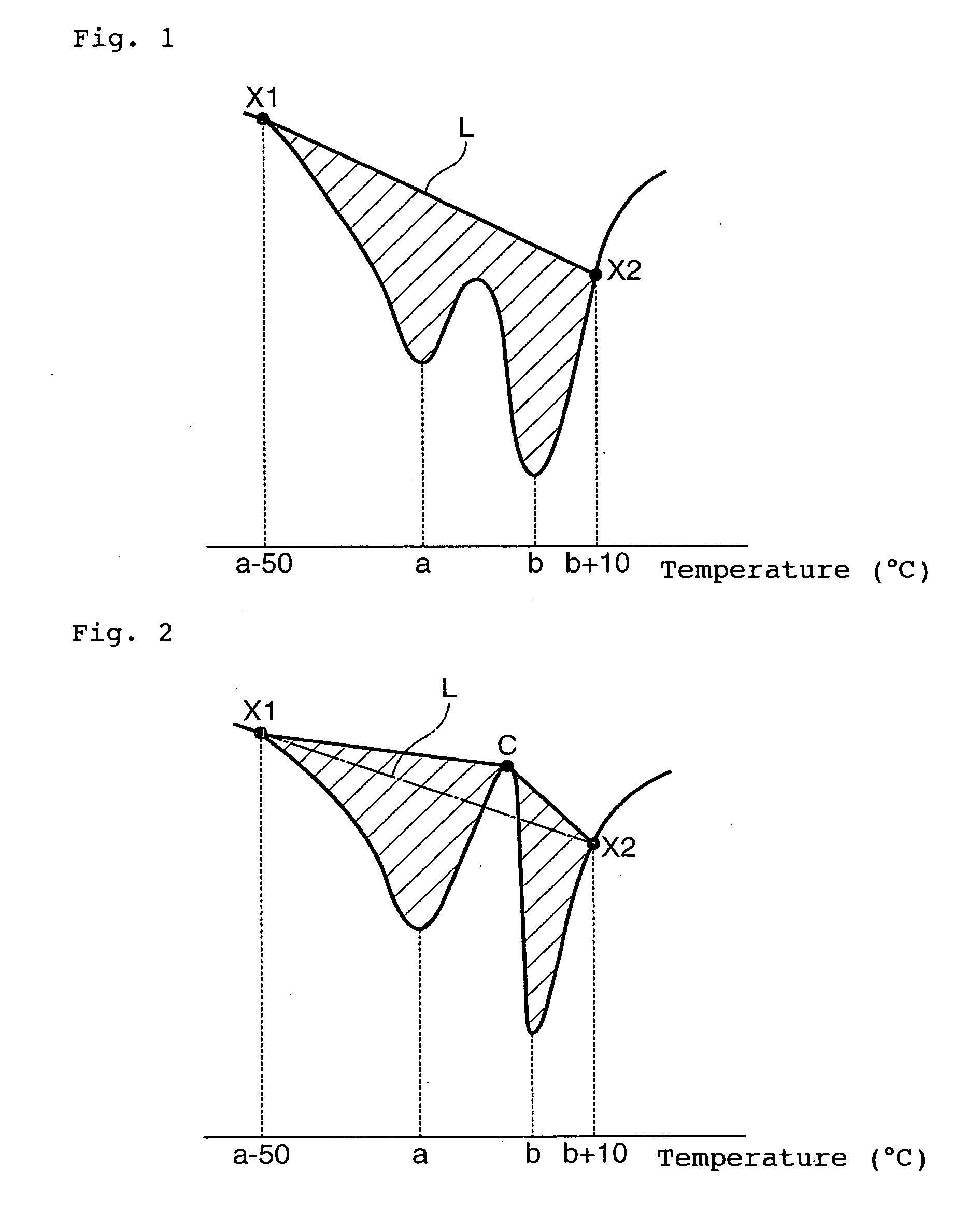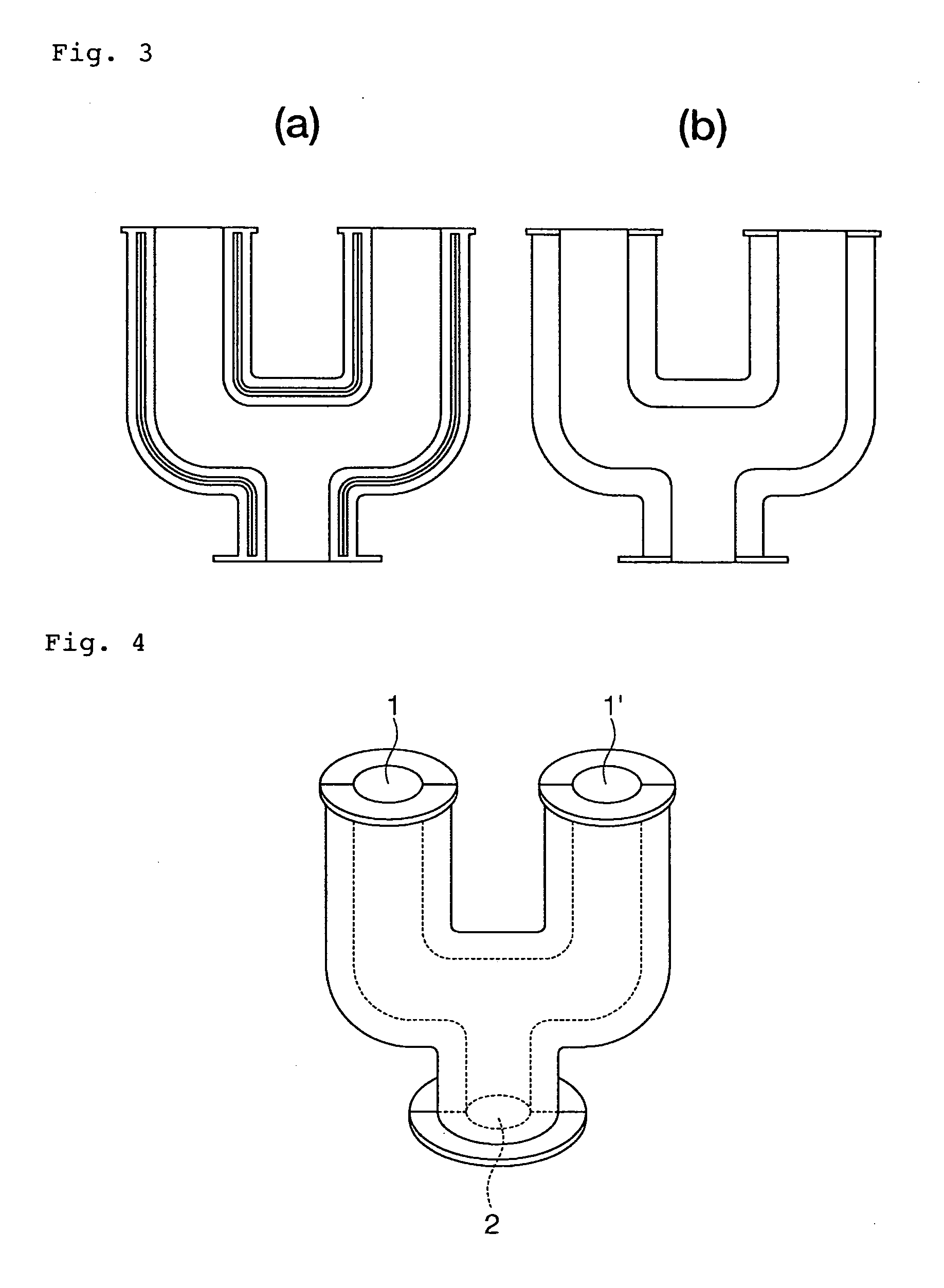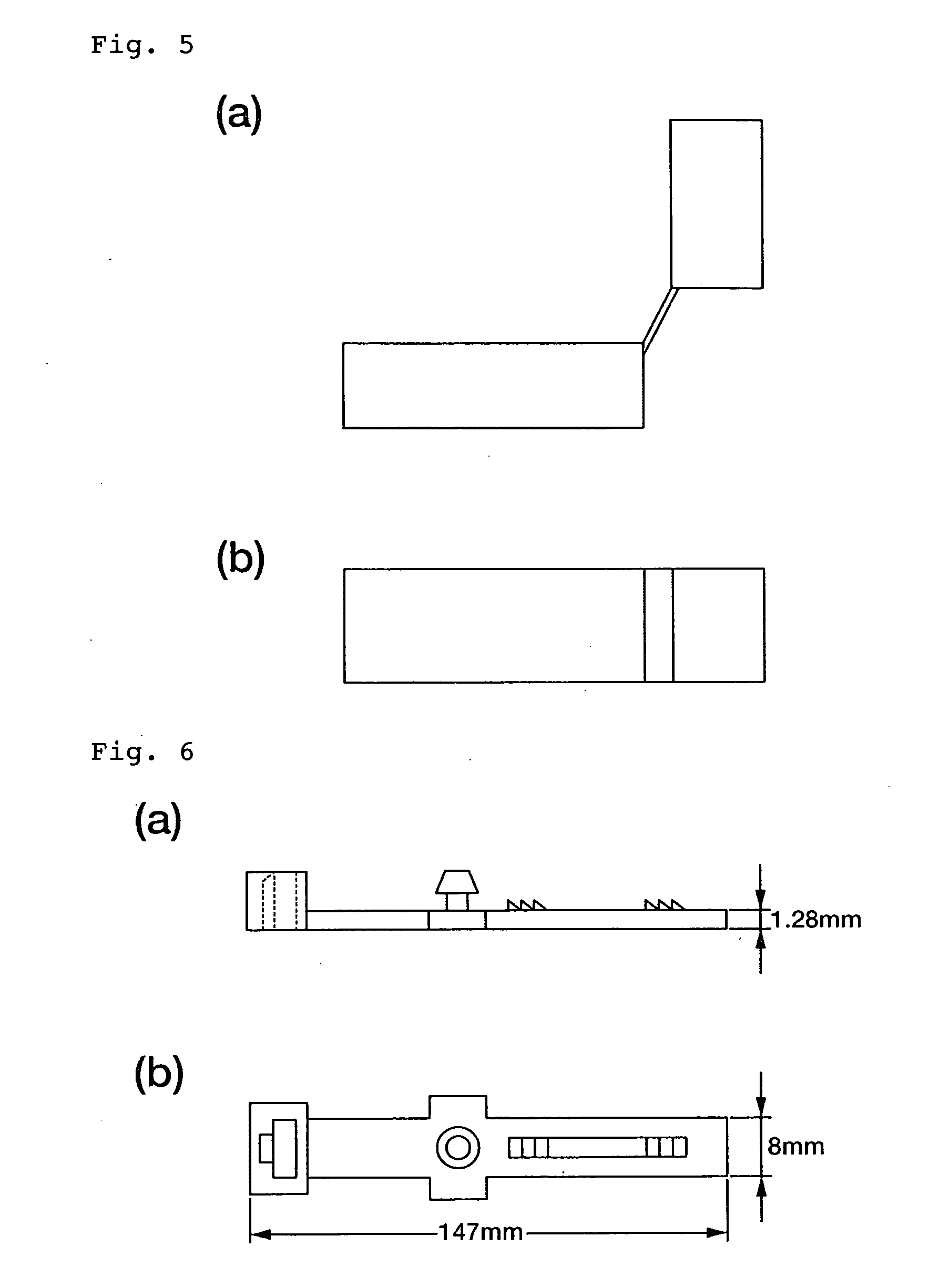Polyamide Resin and Hinged Molded Product
a polyamide resin and hinged molding technology, applied in the field of polyamide resins, can solve the problems of deterioration of retention heat stability, insufficient vibration welding strength, and inability to reduce the thickness of intake manifolds to a limited extent, and achieve excellent vibration welding strength, retention heat stability, and low temperature toughness and transparency.
- Summary
- Abstract
- Description
- Claims
- Application Information
AI Technical Summary
Benefits of technology
Problems solved by technology
Method used
Image
Examples
example 1
Polyamide Resin Composition and Vibration Welded Molded Product
[0102] 25 kg of water was added to 25 kg of a mixture containing the equimolar salt of pentamethylenediamine and adipic acid and the equimolar salt of hexamethylenediamine and adipic acid (as to the weight ratio therebetween, refer to Table 1), and then 1.25 g of phosphorous acid was added thereto to completely dissolve the mixture under a nitrogen atmosphere, thereby obtaining a raw material aqueous solution. The thus obtained raw material aqueous solution was transported into an autoclave previously purged with nitrogen using a plunger pump. By adjusting a jacket temperature and a pressure in the autoclave to 280° C. and 1.47 MPa, respectively, the contents of the autoclave were heated to 270° C. Next, the inside pressure of the autoclave was gradually released and further reduced to terminate the reaction at the time at which the agitation power reached a predetermined value. After completion of the reaction, the ins...
reference example 1
[0104] The same procedure as defined in Example 1 was conducted except that the composition of monomers charged in the raw salts was changed as shown in Table 1, thereby obtaining a polyamide resin. The thus obtained polyamide resin was blended with a glass fiber by the same method as defined in Example 1, thereby obtaining a glass fiber-reinforced polyamide resin composition. The thus obtained polyamide resin composition was subjected to vibration-welding test and evaluation of mechanical properties thereof. The results are shown in Table 1.
example 2
Polyamide Resin Composition, Hinged Molded Product and Binding Band
[0105] 100 parts by weight of the polyamide resin obtained in Example 1 was blended with 0.02 part by weight of talc as a nucleating agent having an average particle size of 3.0 μm and then dry-blended, thereby obtaining a non-reinforced polyamide resin composition. The thus obtained polyamide resin composition was subjected to evaluation of a low-temperature hinge property, a low-temperature band breaking property and mechanical properties thereof. The results are shown in Table 2.
PUM
| Property | Measurement | Unit |
|---|---|---|
| temperature | aaaaa | aaaaa |
| melting point | aaaaa | aaaaa |
| melting point | aaaaa | aaaaa |
Abstract
Description
Claims
Application Information
 Login to View More
Login to View More - R&D
- Intellectual Property
- Life Sciences
- Materials
- Tech Scout
- Unparalleled Data Quality
- Higher Quality Content
- 60% Fewer Hallucinations
Browse by: Latest US Patents, China's latest patents, Technical Efficacy Thesaurus, Application Domain, Technology Topic, Popular Technical Reports.
© 2025 PatSnap. All rights reserved.Legal|Privacy policy|Modern Slavery Act Transparency Statement|Sitemap|About US| Contact US: help@patsnap.com



